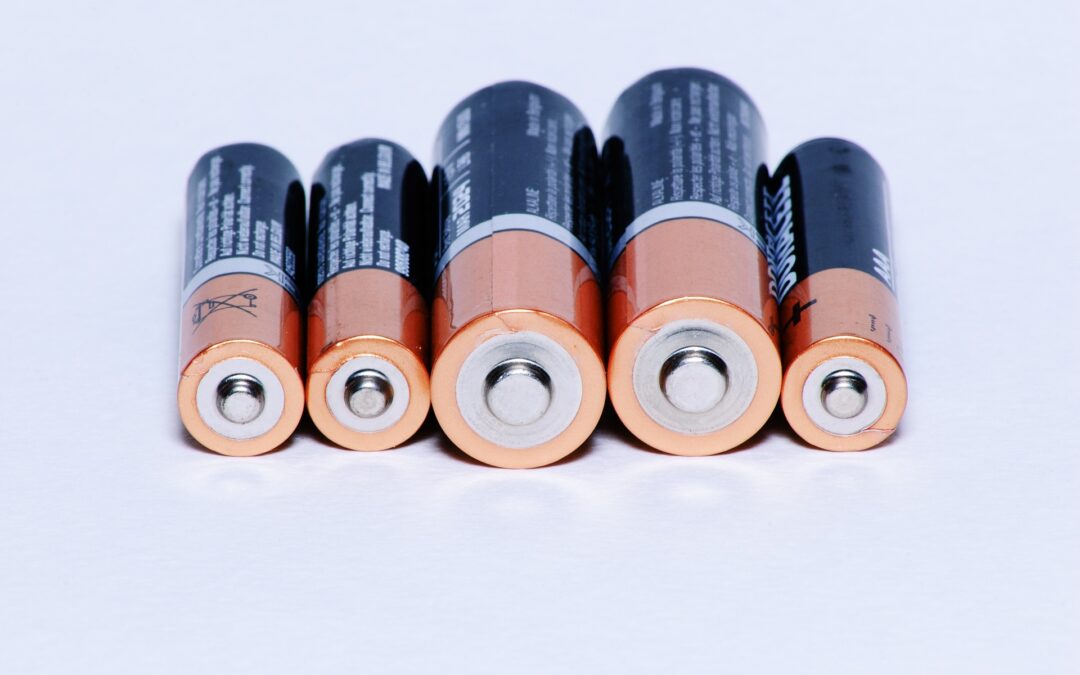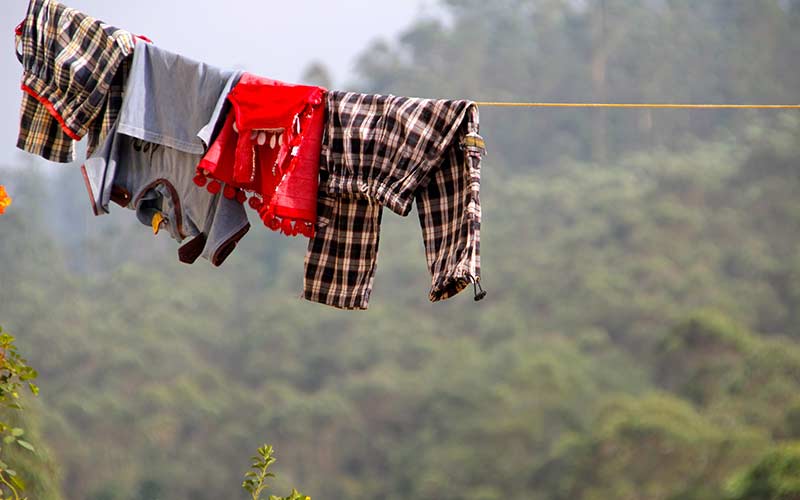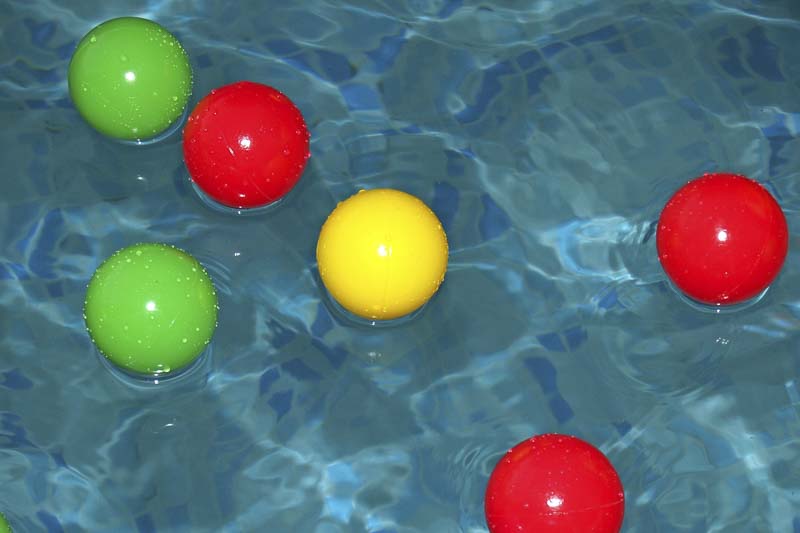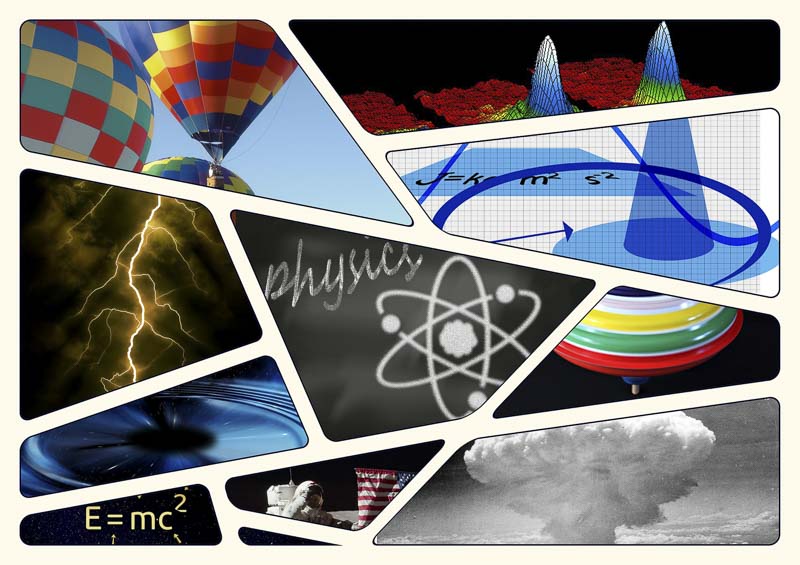Science Lesson: Light
Without light, you can see nothing. So what is light? Light is a kind of energy called electromagnetic radiation. This form of energy is also used in x-ray machines, microwave ovens, and radios. The electromagnetic radiation that we can see is called visible light.
Different sources produce different kinds of light. The sun produces light because it is hot, and this type of light is called incandescence. Other light sources, like fireflies or TVs, are not hot—the kind of light they produce is called luminescence. Fireworks often have a mixture of both incandescent light and luminescent, which is created by special chemicals. An interesting kind of luminescence is triboluminescence, the light that some materials give off when they break. You can see triboluminescent light if you take a clear plastic bag full of sugar cubes into a very dark room. Crush the sugar cubes with a rolling pin, and you should see very small flashes of blue light.
Light is the fastest known substance in the universe. It travels at about 186,000 miles per second, which means it only takes eight minutes to reach earth from the sun, 93 million miles away! This speeding light always travels in a straight line, until it encounters a different substance. Observe this by covering the end of a flashlight with aluminum foil. Poke a hole through the foil with a pencil, so that only a small beam of light shines through. In a dark room, can you ‘aim’ this light and shine it on anything you want to? Yes, because light moves in a straight line. Try placing your flashlight on a table and holding a mirror in front of it. What happens to the beam of light? It bounces off of the mirror and heads in a different direction. This is called reflection. Every time light hits a new substance, some of it is reflected. In some substances, the amount of reflection is small because the substance is transparent, which means you can see through it. Most of the light goes straight through the substance, and only a little bit is reflected. Other substances let light through, but you cannot see through them. These objects are translucent. Opaque substances are those that do not let light travel through them, so the light is reflected off of the surface.
Reflection is only one of the methods that we use to control light. Another one is called refraction. When light that is traveling through one substance, such as air, hits another substance, such as the glass of a window, this juncture is called an interface. Refraction occurs when light bends at such an interface. It does this because the light speed and the wavelength change when the light enters the second substance. For example, when light moves from air to glass, its speed decreases 25%. All of this may sound technical, but you’ve seen refraction at work many times. Have you ever noticed that your legs look strangely bent when you’re dangling them in a pool? This is because the light is being refracted when it hits the water. Observe this at home by filling a glass with water and placing a pencil in it. Look at the pencil from above the glass. Were there any changes in its appearance? Try looking at it from the side of the glass, and then look from underneath up at the surface of the water. The pencil looks different in the water because of refraction.
Science Lesson: Color of Light
What color do you think ‘white light’ is? It seems obvious, doesn’t it—white, of course! Though it is called ‘white’ because it seems to have no color, white light is in fact a mixture of red, orange, yellow, green, blue, indigo, and violet light. Each of the different colors has its own wavelength, which reflects and refracts at its own angle, different from all the other colors. When it passes through a prism (a triangular piece of glass), light is reflected and refracted into a continuous band of colors called a spectrum. The beam of light enters the prism at one angle, but since each color bends at a different angle, they exit the prism at different places, allowing you to see them.
You can see light broken into a color spectrum by using a flashlight and a compact disc. Make a hole about 1/2 inch in diameter in a piece of aluminum foil and then wrap the foil over the end of the flashlight. Place the CD on the table with the shiny side up. Hold the flashlight so that the light reflects off the CD and into your eyes. (Have the CD between you and the flashlight and point the light diagonally.) The small dents and grooves in the CD cause the colors in the light to reflect at different angles. That is why you can see all the colors in a beautiful spectrum.
You may have often wondered what makes a rainbow in the sky after a thunderstorm. It’s simple, really—a rainbow is just white light being dispersed into its colors. Each individual raindrop acts as a little prism. When the light enters the raindrop, it is first refracted into its colors which are then reflected out at different angles. Though each raindrop produces an entire spectrum, you are only able to see one of the colors. That is because some of the colors are reflected at an angle that does not come toward you. All the raindrops in one section of the sky reflect the red light back to you, forming a red band, while the other colors are scattered at different angles so you don’t see them. The next section of raindrops reflects orange toward you, the next yellow, etc. The end result is that you see bands of each color in a beautiful spectrum stretching across the sky. When you look for a rainbow, always remember to keep your back to the sun—you only see the colors when the light is reflected back to you.
A spectroscope is a device that is used by scientists to study the spectra of different light sources. It usually has a diffraction grating, a piece of plastic with grooves, to break the light down into its color components. Different kinds of light have different spectra, so scientists can use precise spectroscopes to identify the properties of stars and find the elements contained in other substances. This is the science of spectroscopy.
You can use a spectroscope to examine different light sources in your home. Incandescent light bulbs and sunlight will produce a continuous spectrum, where all the colors merge smoothly into each other. (Stars, like the sun, actually emit a dark-line spectrum, which has the colors broken up by dark lines. Only very precise spectroscopes can see the dark lines, however, so the sun looks like a continuous spectrum.) A fluorescent light will produce a bright-line spectrum, which has bright lines separated by dark spaces.
When individual elements are heated they produce a specific bright-line spectrum that can be used for identification. If you would like to do experiments to find the spectra of different elements, our Spectroscope Analysis Kit is a good place to start. It includes a student spectroscope, instructions, wooden splints, and four different chloride salts: calcium chloride, potassium chloride, strontium chloride, and lithium chloride. Using these chemicals, as well as table salt, you will be able to see how each chemical gives off its own unique spectrum.
Science Lesson: Mirrors & Kaleidoscopes
Kaleidoscopes, periscopes, microscopes, telescopes – besides the word ending, what do they have in common? They all use optics to enhance our vision in some way. Vision depends on light, and optics are used to control light by reflecting or bending it so that we can see in different ways. Kaleidoscopes use mirrors to reflect light into beautiful shapes and patterns. You can make your own kaleidoscope with three small mirrors that are approximately the same size. Tape the long edges of the mirrors together so that you form a pyramid shape, with the reflecting sides of the mirrors all facing inward. Next, cut out a triangle of thin cardboard to fit one end of the kaleidoscope and tape it on. Use a sharp pencil to poke a hole in the center of the cardboard, to serve as a peephole. Cut two triangles of a transparent substance, like a plastic overhead transparency, to fit the other end; tape up two of the edges to form a three-sided envelope, and put candy sprinkles and/or bits of colored paper inside. Tape the third side closed, then use tape to attach the envelope to the end of the kaleidoscope. Now, look through the end that has the peephole and aim the kaleidoscope at a light source. The colored objects on the other end will reflect off of the mirrors into star-shaped patterns.
You can also examine reflection using two small square glass mirrors taped together on one side. Stand them upright and spread them apart like an open book, so that a small object can be placed between them without touching on either side. How many reflections do you see? Now, lay a pencil in front of the mirrors so that it touches on each side. How many pencils are reflected? Experiment with moving the mirrors closer to and further from each other; how does the number of reflected objects change in relation to the angle of the mirrors?
Science Lesson: Lenses & Mirrors
Basic lenses and mirrors come in two different kinds: concave and convex. These types differ in how and where they focus light. A concave lens diverges light—scatters it and cannot bring it into focus—and the ‘image’ that it forms shows up on the same side as the light it is reflecting. That is because the focal point, which is the point where light rays come to focus or meet, is on the same side of the lens as the light source. The distance between the lens and the focal point is considered to be a negative focal length. You can demonstrate this with a small concave lens: hold the lens over a piece of paper on a table or countertop, near a source of natural light, such as sunlight coming through a window. A small beam of tinted light (the virtual image) should appear on the paper on the same side of the lens as the light is coming from. You can think of it as light bouncing back from the surface of the lens, instead of going through it.
The focal point and image (called a real image) of a convex lens appears on the opposite side of the light it is reflecting. The distance between the lens and the focal point is a positive focal length. You can demonstrate these properties by using a convex lens in the same setup you used for the concave one. This time, the image from the light should appear on the opposite side of the light source.
Mirrors work in a similar way. If you have a small concave mirror, hold it so that light is reflected off of it onto a screen (a manilla folder or a light-colored notebook works well). Now, hold your finger in front of the mirror, without covering the entire surface. Since light diverges off concave mirrors, the image of your finger will not appear on the screen.
Try the experiment again with a convex mirror. The image of your finger (looking like a shadow) should show up on the screen. Unlike concave mirrors, convex mirrors project a clear image. This enables us to see an accurate (though reversed) image of ourselves when we look in a convex bathroom mirror.
Inventions: Fresnel Lens
In the middle of the 18th century, lighthouses consisted of a whale-oil burning lamp placed in the top of a tower. These light sources were very inefficient, as only 3% of the light was visible from the sea. By the beginning of the 19th century, metal reflectors were being placed behind the lamps to reflect more of the light out to sea. While this was an improvement, the light still did not shine far enough to be a timely warning to ships. In 1819 Augustin Fresnel, a French physicist, developed a new system for concentrating the light, and the result was the Fresnel lens. He surrounded the light source with a barrel-shaped array of lenses placed in a pattern that reflected or refracted the light into one strong, horizontal beam. With a 1000 watt bulb, a Fresnel lens could send a 680,000 candlepower beam that could be seen up to 21 miles out to sea. In addition to its power, the design of the lens was such that it allowed each lighthouse to flash in its own pattern, sometimes even with color. This allowed sailors to locate their exact position by determining which lighthouse they could see.
The largest kind of Fresnel lens, a ‘first order’ lens, stood up to 10-12 feet tall, was about six feet in circumference, and could weigh up to three tons. To see a close-up shot of a first order lens, go to http://lighthousegetaway.com/lights/OR/hecfres1.jpg, and to see a picture of one in a lighthouse, click http://lighthousegetaway.com/lights/heceta.html.
The Scientific Speaker
Camera Obscura: from the Latin for ‘dark chamber.’ It originally consisted of a dark room with a tiny hole for light to come through; a reversed image of outside objects was projected through the hole and onto the opposite wall. This was used as early as 330 BC for viewing solar eclipses. Later cameras used a glass lens and a sheet of glass to more accurately project the image so that it could be sketched. This device was helpful for astronomers and artists; Vermeer is thought to have used a camera obscura while he was painting A View of Delft.





